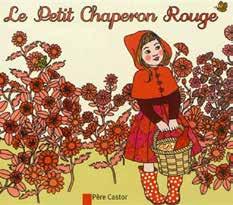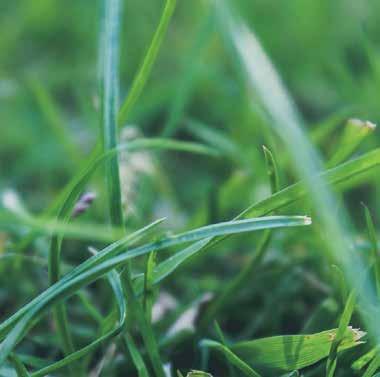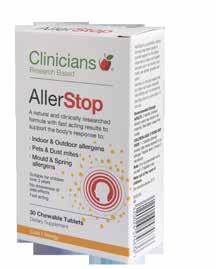
6 minute read
Millwater Romeo’s
Millwater ROMEOs – First outing a success!
The idea for the Millwater ROMEOs (Retired Old Men, Eating Out), as proposed in last month’s magazine, has taken off and we already have nine members. After agreeing to go out for lunch on the second Thursday of each month, seven of our ROMEOs went to Soljans Winery for lunch on the Thursday 13th of last month. Tony Soljans, owner of the winery and restaurant business, welcomed us warmly with a very informative and enjoyable tour of the winery. He also kindly provided us with a free wine tasting before we enjoyed a superb set-menu lunch; three delicious courses for just $32 each.
Advertisement
Each month, we will go somewhere different and we will all take turns to arrange the lunch venue and associated activity. We hope to have at least all nine of us together for the next lunch outing on Thursday, September 10th.
There is room, of course, for some more like-minded men to join us. You just need to live in theMillwatermag residential circulation area and be male and retired, in order to qualify. So, if you feel that being a Millwater ROMEO is for you, please get in touch through the magazine.
Millwater ROWENAs
After the successful launch of the MILLWATER ROMEOs (Retired Old Men, Eating Out, it’s time to suggest that a similar women’s lunch group might also find favour. Now, I know what you’re thinking – we already have a women’s group in Millwater, so we need to be careful not to cut across or try in any way to supplant that excellent organisation and all the hard work done by Marj Noble. The Millwater ROMEOs is just a men’s lunch group, although other activities may well spin off that (walking, golfing, fishing, whisky appreciation, etc). This article is just to ask in there is room for, and any interest in forming, a separate group that would meet (say) one a month, but specifically for retired women to enjoy lunches out together each time? If you are interested in being part of a ROWENA group (Retired Old Women Enjoying Nice Afternoons), please get in touch with Margaret Mullan, via the magazine’s email. If you feel it is not necessary, please also let Margaret know.
Fine Wine Review – Chateau Musar 2007
Since moving to New Zealand, I have seldom seen some of the wines that were favourites when we lived in the UK. In particular, I missed a rare Lebanese wine – yes, you read it right first time – I did mean Lebanese and there is no need to strain out the shrapnel that you might expect, coming from that volatile part of the world. The wine in question is Chateau Musar, to which I first introduced back in the late 1990’s. From the first taste of this complex and compelling wine, I was hooked.
The Hochar family (pronounced Hoshar) moved in the 12th century from France to what is known nowadays as Lebanon. Formerly Phoenicia, winemaking has been recorded there since 4,500 BC, although the Hochar vineyards date back to just 1930.
Chateau Musar is a blend of Cabernet Sauvignon, Carignan and Cinsault from vineyards near the Bekaa Valley villages of Aana and Kefraya, on gravelly soils over limestone and yields are typically low from the mature bushvines (average age 40 years). Under a natural cork closure, you will discover the 2007 to be a wine with a clear and deep garnet colour. The nose is clean, medium and develops with a little time, presenting aromas of dark cherries, cinnamon, blackberries, clove and leather. On the palate, it is dry, with above-medium flavour intensity and finish. Flavours of blackberries, clove, sour cherries, molasses, leather. There is an intense textural feel to this superb wine and just looking at the long, thin tears that fall slowly back into the liquid when you swirl it around your glass brings a smile of deep satisfaction.
Bottled unfined and unfiltered, Chateau Musar wines are suitable for vegans (fining agents often contain animal proteins); they’re also richly-textured and likely to ‘throw a crust’. This is a common feature of most fine wines and is especially true of Musar Red vintages over a decade old. Ideally, bottles should be stood up the night before opening to settle any sediment. After careful decanting (and discarding of sediment, usually in the last centimetre of the bottle) the wine should be allowed to breathe for several hours and served at 18°C with roasts, grills (especially lamb), casseroles, game, and mature cheeses. This 2007 is great example of a matured wine that will improve further with careful cellaring.
Available in Auckland from Glengarry Wines.
Read more on www.chateaumusar.com
Dry Eye at OPSM
Dry Eye is a very common eye condition, affecting many Kiwis of all ages. Dry eyes occur when your tear film is unstable or insufficient to keep the eye moist throughout the day. The effects of dry eye can range from subtle irritation to constant inflammation of the front of the eye.
Dry Eye Symptoms: The most common symptoms are gritty, scratchy, red or burning eyes. Often, a watery eye in the wind or bright sunshine can be an indication of a dry eye, because excessive dryness will cause overstimulation and flood the eyes with tears.
Irritation and redness are not the only symptoms of dry eyes. Recent studies suggest that reading speed can slow significantly with increasingly dry eyes, and patients with dry eyes report that vision may start to blur after 10 or more minutes of reading.
Dry Eye Causes: Tears are very important for maintaining good vision and eye health, as they provide a smooth, clean surface for us to see through, as well as washing dust or bacteria out of the eyes. Tears are produced by two main types of glands in the eyes: the lachrymal and meibomian glands. In dry eye syndrome, these glands can either have a lower production rate or become blocked, which will lead to rapid evaporation of tears. Dry eye can occur as part of the natural ageing process, particularly during menopause in women or through any times of hormonal change, but it can also be affected by antihistamines or certain blood pressure medications. Working in an air-conditioned or dusty environment can also exacerbate dryness. Another cause is insufficient blinking, such as when using a computer screen, with up to 75% of computer users (both men and women) stating they suffer dryness at some time during the day. Dry eye is also relatively common in contact lens wearers.
Dry Eye Treatment: A number of treatments exist for this chronic condition, which vary depending on the cause and type of dry eye. Treatment options range from using lubricating eye drops throughout the day for mild symptoms, through to hot compresses to unblock the glands around the eyes and, in some cases, antibacterial or anti-inflammatory eye drops. Dry eye can also be improved by increasing water intake and by dietary supplements like omega-3 oils. If you have been experiencing dry or gritty eyes and would like an appointment with Zaria to discuss treatment options, please call OPSM Silverdale on 09 426 7902.
Zaria Burden BOptom TPA Endorsement
OPSM SILVERDALE OFFERS FREE EYE TESTS TO ALL SOUTHERN CROSS HEALTH
SOCIETY MEMBERS^
Southern Cross Health Society members can also save 15%* on a wide range of quality prescription glasses, non-prescription and prescription sunglasses.
OPSM Silverdale
Silverdale Centre Shop 11B 61 Silverdale St Silverdale, AUK 0932 Tel: (09) 426 7902
opsm.co.nz
^ Offer is applicable on a Standard Eye Test at OPSM plus a digital retinal scan. Available for Southern Cross Health Society members only (excludes travel insurance policy holders). Please present your Southern Cross membership number or card to redeem offer. Subject to appointment availability. Excludes contact lens examinations. Offer only available once per eligible member every two years. Offer is not transferrable to another person. *Excludes eye tests and contact lens consultations and designer brand frames and sunglasses by Chanel and Maui Jim products. Health fund discounts are not available in conjunction with any other offer, discount or benefit other than the
Southern Cross Health Society Easy-Claim.









